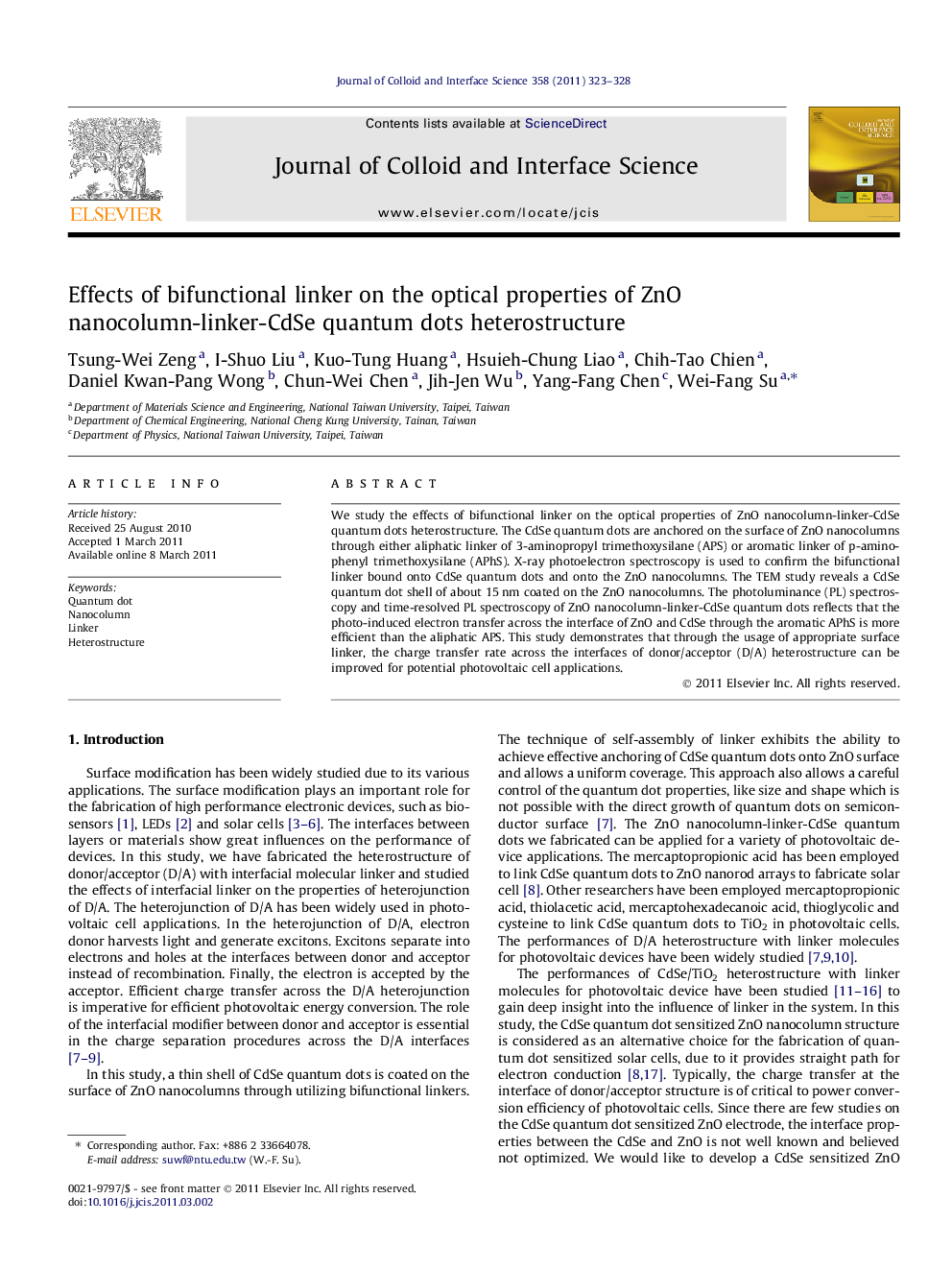| Article ID | Journal | Published Year | Pages | File Type |
|---|---|---|---|---|
| 608577 | Journal of Colloid and Interface Science | 2011 | 6 Pages |
We study the effects of bifunctional linker on the optical properties of ZnO nanocolumn-linker-CdSe quantum dots heterostructure. The CdSe quantum dots are anchored on the surface of ZnO nanocolumns through either aliphatic linker of 3-aminopropyl trimethoxysilane (APS) or aromatic linker of p-aminophenyl trimethoxysilane (APhS). X-ray photoelectron spectroscopy is used to confirm the bifunctional linker bound onto CdSe quantum dots and onto the ZnO nanocolumns. The TEM study reveals a CdSe quantum dot shell of about 15 nm coated on the ZnO nanocolumns. The photoluminance (PL) spectroscopy and time-resolved PL spectroscopy of ZnO nanocolumn-linker-CdSe quantum dots reflects that the photo-induced electron transfer across the interface of ZnO and CdSe through the aromatic APhS is more efficient than the aliphatic APS. This study demonstrates that through the usage of appropriate surface linker, the charge transfer rate across the interfaces of donor/acceptor (D/A) heterostructure can be improved for potential photovoltaic cell applications.
Graphical abstractZnO-linker-CdSe heterostructures are constructed with bi-functional linker either 3-aminopropyl trimethoxysilane (APS) or p-aminophenyl trimethoxysilane (APhS). Lower PL intensity and emission lifetime of the heterostructure with APhS is resulted from more efficient charge transfer..Figure optionsDownload full-size imageDownload high-quality image (149 K)Download as PowerPoint slideHighlights► A shell of CdSe quantum dots is coated on ZnO through bi-functional linker either APS or APhS. ► Lower PL intensity and lifetime of the ZnO-linker-CdSe heterostructure with APhS is resulted. ► By the usage of appropriate linker, the charge transfer rate across the interfaces can be improved.
